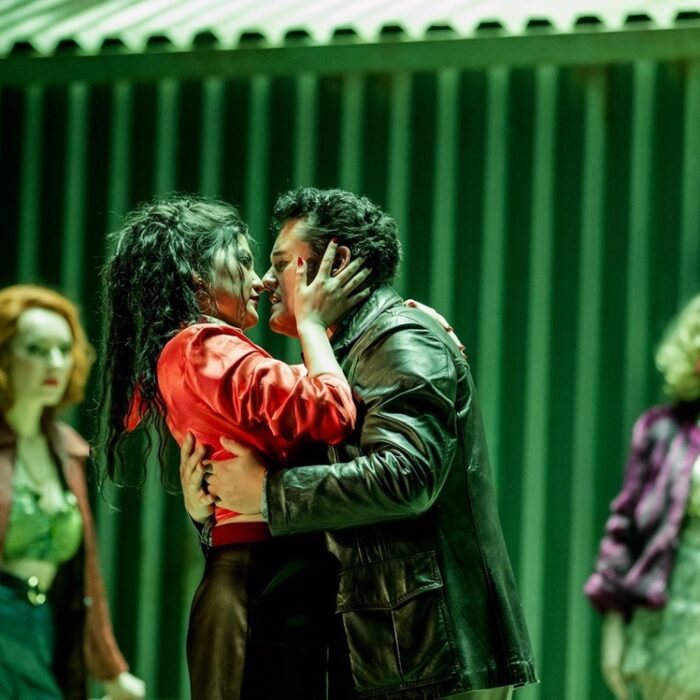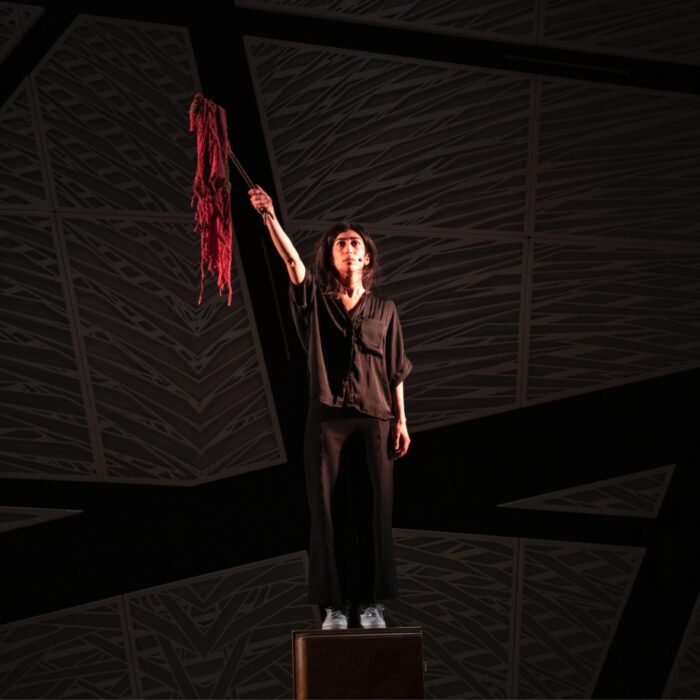
Seattle Symphony Orchestra 2018-19 Review: Bach Mass in B-Minor
Ludovic Morlot Leads A Wondrous Rendition of This Masterpiece, With Jane Archibald Shining Brightly
By John CarrollIf you’ve never attended a performance of the Mass in B-Minor, its reputation as one of the greatest works of art in the history of Western civilization can be a little intimidating, and it sets a pretty high bar, even for Mr. Bach.
Though I know the work moderately well from recordings, last Thursday night, March 14, 2019, was my first live performance so the stakes were high.
Any other B-Minor newcomers in Seattle can rest easy in the hands of conductor Ludovic Morlot, who fashioned a gracious, jubilant event.
A Conductor’s Farewell
This is Morlot’s last season captaining the Seattle Symphony as its Music Director, and one can understand why he chose this profound masterwork as one his parting gifts to the city. The capacity audience on Thursday night was rapt, and eagerly unwrapped this big box of Bach, if you will. Morlot programmed and led a remarkable variety of works across his eight-year tenure and he will be missed.
As he is quoted in the program notes, he chose to use “smaller forces as … done in the original performance setting.” This meant a choir of just under 60 and an instrumental ensemble of about three dozen.
The small, polished orchestra painted a range of sound colors from intimate to majestic across the five movements of the mass. The work was essentially assembled by Bach toward the end of his life from his previous compositions, with some revisions to connect them; as such one of its challenges is bringing a sense of unity to this monumental compilation. Morlot gathered all the components together seamlessly from the resplendent choral fugues topped by brilliant silvery trumpets, to the elegant interludes of the vocal arias and duets, which often feature instrumental solos in counter-melodic obbligato.
Tempos were spirited and brimming with life and motion, only feeling too fast at a couple spots. For example, the triumphant “Cum Sancto Spiritu” for the choir was a thrilling close to the first half of the evening before the intermission break, but it was so brisk a race that I feared there might be some choir members left behind at the finish line. And inevitably, at that pace, some choral and orchestral lines are going to lose clarity.
Balanced Choral Forces
The Seattle Symphony Chorale was polished to a warm sheen.
The short opening “Kyrie” is an immediate litmus test for choral balance and blend, and especially puts the sopranos on the spot with their exposed connective lines, so it was reassuring from those opening bars that all would we well.
The sopranos provided round, appealing tones with no glare, while the altos held fast to their harmonic role, admirably not drawing attention to themselves.
The tenors seemed a little bashful at first, perhaps feeling daunted by their small numbers compared to the other sections. I counted 34 women to only 23 men, of which less than half were tenors. However, they delivered vigor when requested by Bach and Morlot.
The basses were the solid bedrock, adding drama to the evening, as in on their reentry in the “Kyrie eleison,” signaling that things were getting serious. The Chorale nailed the tricky rising triplets on “Sanctus, sanctus sanctus” with impeccable intonation and tuning; under Morlot’s elegant touch, it may have been the most beautiful and translucent moment of the evening.
A Variety of Vocalists
The work is unevenly structured for the vocal soloists with arias and duets sprinkled amongst the team.
Canadian Jane Archibald is a top-tier operatic coloratura soprano that I know from her solo recital CD of bravura arias by Haydn, where she sails through turbo-charged high-flying florid pieces with amazing panache. I was curious how her voice would come over in a big hall in baroque material that has such a relatively low tessitura for her voice type. I was glad to discover she projected well, with a creamy tone that had a lovely glow at the top (which I’d add is really not that high at all: her “Laudamus te” aria only peaks at E5, a full octave below Zerbinetta’s heights more typical for Archibald). Trills and filigree were skillfully embroidered. I appreciated how charismatic she was on the platform, making constant eye contact with her colleagues and actively engaging with the audience.
The others singers, by contrast, were on the stiffer, more formal side. German bass-baritone Andreas Wolf sounded a bit dry in his first aria “Quoniam tu solu sanctus,” which is written in a lower range. He was better suited to his second aria “Et in Spiritum Sanctus” with its higher vocal line and thinner orchestration, which revealed more of his innate talent.
The tenor of Kenneth Traver was clear and attractive, but I wanted more depth of feeling from him in the beautiful “Benedictus” aria. It was very well sung technically, but I wasn’t transported.
Meg Bragle’s mezzo-soprano struck me as rather compartmentalized as she too noticeably shifted placement across vowels and registers. That said, she delivered one of the truest moments of emotional depth in the poignant “Agnus Dei” aria that comes near the end of the work. Bragle’s conviction was palpable and the effect was very moving as a culmination of all that had come before.
It was a full house in Seattle’s Benaroya Hall, which seats 2,500. With two more performances scheduled in this run, it is satisfying to realize that Bach has the powerful draw of a commercial pop star, and that his major works bring in large crowds who want to experience his genius, even across centuries.



